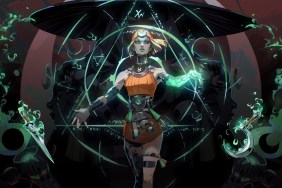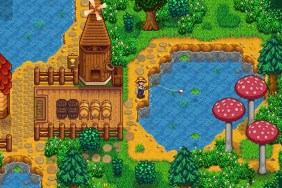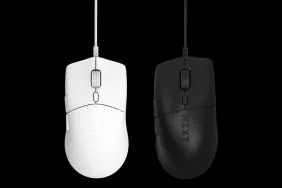Almost counts in horseshoes and nuclear strikes.
All right, let’s get the big key point out of the way before the rabid fanboys tear me some new ventilation shafts: Starcraft 2 is good. It’s a fun, technically solid game with great music and solid visuals. There’s a decent 20 hours of solid gameplay in the single-player alone – pretty much all of it enjoyable – and there’s probably enough hours of fun in the multiplayer to last you, oh, let’s say 12 years. But I am a dissident. I am naturally a negative person; I do my best to vocalize what can be improved. Starcraft may be good, but there’s a big, nagging complaint I have: Starcraft 2 is Starcraft 1 with prettier graphics but fewer features.
[image1]Let me elaborate on that – I’m not talking about lacking a map editor – SC2 has one, and it’s very robust. Nor is it lacking a particular in-game UI function – SC2 is quite up-to-date and has many of the improvements that the last 12 years of RTS games came up with in that department. Mostly, it’s lacking the little conveniences of the original – no LAN play, no chat rooms, no cross-region support, no tournament support, and most worrying of all, a marked decline in your ability to just sign on privately and have a good time. Depending on how much you want your real name available to random mooks on the web, you can bump the importance of that last mark up or down. Although I’m not terribly affronted by it, I do find the trend disconcerting.
But gameplay is the important subject here. If you own Starcraft 1, it will all be very, very familiar. The rules haven’t changed, and many of the units haven’t really changed either. The three core races play very similarly to their original counterparts, with many of the same strengths and weaknesses. Each race has had some core weakness shored up – the Terrans have more viable early-game strength, the Zerg have been given some late-game surprise-you’re-boned tools and early game resilience, and the Protoss have been given a bit more mobility.
In practice, though, they all have roughly the same strengths and weaknesses as they did before: Terrans are awesome at range, but get on top of them, and they fold quickly; Zerg trade quantity for quality; Protoss trade quality for quantitiy. None of this has really changed, and after you’ve adjusted to the new unit balances, the game will feel eerily familiar. Like you’ve done this more than a few times in the past 12 years… hmm…
Since Starcraft 2 shares the same underlying mechanics with Starcraft 1 – at least in practice – many of the same strategies and techniques from the first game work just fine as applied to the sequel. That’s sort of boring. Starcraft 1 was an excellent game; it defined the RTS genre for about four years running. But that doesn’t mean it’s automatically the top-quality now, and many other games have passed it up. The Dawn of War series put the focus on the tactics and troop load-out, easing a lot of the micro-management of resource gathering, and it worked. Company of Heroes took this a step further, and introduced dynamic squad AI, extensive cover mechanics, and tanks that actually act like tanks. Supreme Commander brought in a much broader strategic scope than Starcraft, or just about any other RTS game. Bottom line, Starcraft 2 feels very much like a game from 1998.
[image2]It’s hard to say if that’s strictly a bad thing; games have improved, but there are still lessons from the old grand-daddy games worth keeping around, and Starcraft did set the standard for RTS balance and dynamism. But every game since has aimed to be at least Starcraft in strategic and tactical interest, and that puts Starcraft 2 into the awkward position of being merely as interesting as its predecessor, not raising the stakes or improving the core gameplay in any notable way. This isn’t like the transition from Warcraft 2 to Warcraft 3; this is much more akin to the transition from Diablo to Diablo 2. Things are sharply defined, smoother, and technically more impressive, but in terms of the raw interactions, gameplay is not particularly different.
Okay, rant over. How’s the campaign, you might ask? The highlight, I’d say. The campaign got all the loving that the multiplayer game did not; though the first several missions will feel like something of a carbon copy of the original Starcraft’s first few missions, it quickly blooms into a much larger and more interestingly presented campaign than most RTS games ever provide. Individual missions vary considerably, and there’s no shortage of interesting gameplay mechanics at work. These constraints are where the Starcraft mechanics start to feel more interesting. Working around the hazards and restrictions in the campaign missions present some original and fun challenged, rather than another game of Who Clicks Faster™.
What’s more, the campaign features unique units, including several units from the original Starcraft. Many of them still fare well in Starcraft 2 – the Goliath, for example, is still an incredibly versatile unit, handy as the backbone of any assault or defense. For the most part, none of the unique units are total game changers, especially since some of them are essentially duplicates of the ‘standard’ SC2 units that you’ll still have available.
The between-mission sections provide access to permanent upgrades for your force, dialogue from key characters, and plenty of visual oomph. It’s an elegant way of handling a number of disparate features, such as replaying old missions or researching new tech for your burgeoning revolution. What’s more, the dialogue is sufficiently well written that you don’t need eons of background history for each character; they express themselves in speech and motion well.
[image3]Since the missions can be taken somewhat out of order, the hub serves as the primary location for many of the CGI cut-scenes – all of which are pretty cool. Many of the cut-scenes are used for exposition this time around, but none of the dramatic possibilities or opportunities to expound upon the setting are missed. The writers and editors at Blizzard did a good job, and the technical execution of the scripts is likewise very high quality.
The music is, with the exception of the credit sequence music, very good. The music for the Terrans has always been my favorite – a wandering mix of musical genres, going from rock to country to mild bluegrass influences to orchestral and then back around, somehow always smooth and natural. It's a great soundtrack to mine and massacre to, especially between the fights themselves.
Graphics are decent; you will not be floored. This is not the latest and greatest of visuals. But it’s sufficient – the game’s look has been updated to more modern artistic standards, and the performance is impressive. Nothing – outside of the cut-scenes – will particularly impress, and even within the cut-scenes, this isn’t really the top of the visual heap.
Some of you may be wondering why I haven’t brought up the three-part release thing yet. Just so I address all relevant points, let me say now that this isn’t a dire concern. People are apparently upset that they might pay as much as $150 for the full game. Enumerating the points: First off, Wings of Liberty has 29 missions; the original Starcraft had just over 30. Fair odds say the next one will have roughly the same amount; Broodwar brought about 30 too. We already got the full game for $50, and we’re getting offered two expansions. If you want to feel outraged about something, pick something else.
The bottom line is that Starcraft 2 is a very fun, very solid game. It’s nothing truly new or revolutionary, so it isn’t deserving of the highest praise, but it’s well put together, and the underlying game mechanics can still create some fun matches. It’s just a shame that the gameplay is where Blizzard took the fewest risks, as that’s the place where it would have been most significant.
-
Excellent campaign
-
Fun, unique units in single-player
-
Great music
-
Technically solid
-
1998
-
Now everyone knows my e-mail address! Oh, wait...











